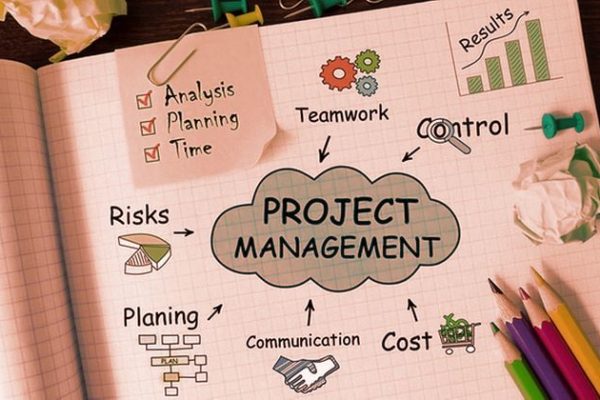

Course: MGT 360
Title: Management and Organizational Behavior
Assignment: Personality Assessment and Dialogue
“He who looks outward sleeps; he who looks inward wakes.”
Carl Jung (1875-1961)
“Each person’s life is lived as a series of conversations.”
Deborah Tannen (1945-)
Goal:
The goal of this assignment is to learn about the world of personality assessments and related management dialogues by taking one of the leading and most widely accepted inventories – the “Big Five.” Another such assessment is the Myers-Briggs Type Indicator (MBTI), which business students likely took in the BUS302 “Gateway” course. The working assumption is that personality is a factor that influences work performance.
Personality Assessment and Dialogue – Instructions:
Go to the website below and take the online assessment. The assessment consists of 120 items. First, you will need to check two boxes (look carefully on the screen) to indicate that you understand there is a slight chance the program might crash (don’t worry – it won’t crash) and that you understand the limitations of the test (which I will also explain in class). Second, go to the bottom of the page, click “Send” to begin answering the questions. I estimate that completing the entire assessment (the 120 questions are split into two sections of 60 questions each) will take between 15 and 45 minutes, depending on a number of factors. The profile works by comparing your answers to others’ answers in similar (but broad) demographic groups.
Take your time and answer each question as honestly as you can. There are no right or wrong answers. Answer the questions as you really are (social identity) as opposed to how you would like to be (social desirability) – otherwise you will not get a true assessment of your personality. This is very important.
Confidentiality:
To obtain general feedback, you may share the results of the profile with anyone you like (even a close friend) except another student in class.
Due Date:
This work is due at the date and time listed on the “Course Outline.”
Deliverable:
After you finish the assessment, you will receive a printout (approximately 8 pages) of your results. Print out TWO COPIES – one for you to keep, and one for you to turn in to the instructor along with your write-up essay (staple the profile output to your essay).
The assessment will measure your personality along five dimensions (“OCEAN”) – Openness to experience, Conscientiousness, Extraversion, Agreeableness, and Neuroticism. The vocabulary of the report is important but occasionally opaque, so make sure you read the entire report, perhaps more than once. You may also wish to keep a college dictionary handy to look up words for which you don’t know the meaning.
Narrative Structure:
After reading your results and reflecting on them thoroughly, prepare a short essay in the format of a management-oriented dialogue. That is, create an organizational situation that might involve the role or examination of personality, including (but not limited to) “new hire interview”, “performance evaluation”, “disciplinary action”, “promotion interview”, “customer relationship review”, “new project”, or “information gathering”, etc. The dialogue relationships will probably include a “supervisor and a subordinate”, an “executive and a manager”, or “two peer managers”, etc. The major criterion is that the dialogue involves at least two individuals, one of whom is you. In general, the dialogue should traverse the 1), reliability and validity of the personality profile results, 2), the opportunity and possible strategies to leverage the strengths identified in the personality profile results, and 3), the challenges and possible interventions to overcome the weaknesses identified in the personality profile results. Naturally, the relative importance of any high score, moderate, or low score is also a function of the “fit” needed for a particular position, organization, or industry. Ensure that your dialogue incorporates at least three of the five personality profile dimensions and at least two of the six facets for each of the three dimensions from the profile results. Underline each of the six facets as they are used for the first time. Use quotes for dialogue as needed.
As long as you address the three areas above, the thesis(es) and argumentation/logic of the management dialogue is not fixed in any way. In some ways, the dialogue is a “screen-play” with the emphasis on the discourse (discussion) of the actors (individuals). I want you to choose a possible (real or imagined) business/management conversation that you feel is important. The first paragraph of the essay should describe the management (organizational) situation in a clear and compelling manner. It should answer the question: Why is this organizational situation, of all the situations that could occur, particularly important? Similarly, the final paragraph of the essay might be a general conclusion or other narrative comments that don’t fit neatly in a dialogue format.
Turn in the dialogue and the actual print-out of the personality profile with your results. Please be sure to put your name on both the essay and personality profile in case they get separated. Please staple the two printouts together with your essay on top of the results.
Length:
This essay is to be no less than two and one-half pages in length and no more than four full pages in length.
Performance Measurement:
The maximum number of points for content is 10. The scoring rubric is as follows:
- 1 – description of realistic management (organizational) situation;
- 3 – breadth of the dialogue (chiefly, effective use of multiple dimensions);
- 3 – depth of the dialogue (chiefly, effective use of detailed facets);
- 3 – rigorous and relevant application of personality facets in dialogue context.
Tips/Suggestions:
Many students will choose to write about an actual conversation involving personality from their work experience or perhaps the manner in which a conversation might proceed for a future job interview. Additional situations include past experiences, storytelling, cases, workplace drama, negotiation, and cross-cultural exchanges. In a nutshell, you want a situation where the stakes are high, opinions vary, and emotions run strong.
The following situations and topics are some ideas related to important management conversations regarding “performance”. Personality, of course, can influence performance, although reasonable individuals may differ on the particular impact of personality in any given context. One or more of the following ideas may spark your creativity and thought for this assignment. These were excerpted and adapted from the following book – Green, M. (2013), Painless Performance Conversations, Wiley.
- Clarifying or Sharing Expectations
- Linking Attitudes and Actions
- Increasing the use of (objective) Evidence over (subjective) Judgment
- Expanding Curiosity, Possibilities, and Opportunities
- Creating a Culture of Ownership
- Improving Confidence without Hubris
The following situations and topics are some ideas related to the “most difficult conversations” that occur often in organizations. Personality, of course, is one part of such conversations, although, again, reasonable individuals may differ on any given aspect of personality and its overall explanatory or predictive role in the situation. These were excerpted and adapted from the following book – Stone, D., Patton, B., and Heen, S. (eds.) (2010), Difficult Conversations, 2nd. ed., Penguin Books.
- Exploring Each Other’s Stories
- Separating Intent from Impact
- Reducing and Eliminating Blame; Focus the Conversation on Contributions
- Learning to Manage Your Feelings (or Else They Will Manage You)
- Articulating Your Identity and Purpose
- Improving Your Active Listening Skills
- Speaking with Clarity and Power; Learning to Lead and Problem-Solve
Conversations regarding organizational performance, either reviewing recent activities (“looking backward”) or agreeing on expectations (“looking forward”), consume a large fraction of a manager’s time, even if it’s only a 1-minute discussion. At the level of conversation among individuals, organizational performance is chiefly about the following seven aspects of work: attitude, efficiency, human relations, judgment, knowledge, reliability, and communication skills. Before you turn in your personality paper, ask yourself: Does your dialogue one or more of those seven work aspects either as an explicit thesis or an explicit element?
Students should also read and comprehend the details in Chapter 15 “Individual Behavior” of our Schermerhorn textbook even though this chapter comes later in our class outline. This chapter contains key ideas that can improve the rigor and relevance of your personality essay. In addition to discussing the “Big 5” personality profile, some key ideas regarding personality and performance from this chapter are as follows:
- What is a psychological contract at work? How can this “contract” be perceived differently by different individuals?
- What is meant by the psychological terms fundamental attribution error and self-serving bias? How might one or both of these occur in a workplace setting?
- How do individuals lose sight of important individual differences, perhaps subconsciously, through distortions due to: stereotypes, halo effects, selective perception, and projection? How can even well-educated individuals succumb to these tendencies?
- How do individuals adjust their emotional attributes? Do you understand and how might you use – properly, of course – one or more of the following ideas in your personality essay: locus of control, authoritarianism, Machiavellianism, self-monitoring, and “Type A” Personality? How can even well-meaning individuals misunderstand, misrepresent, or misuse one or more of these attributes?
- What is the relationship between attitude and job satisfaction, job trends, and job outcomes? How can even well-experienced, genuine, and reasonable professionals, managers, and executives view these relationships very differently in an organizational context?
- What is meant by the terms withdrawal behavior, employee engagement, job involvement, organizational commitment, organizational citizenship, job satisfaction, and job performance? How can they be measured and managed? Which of these might be important but hard to measure and/or hard to manage? For these factors, is personality a cause or an effect, or something else altogether?
- How are emotions, moods, stress, and strain similar? How are they different? How do they impact performance at work? Can stress ever be positive? How so?
NOTE! AEssay’s professional writers have already completed this assignment. We are ready to help You with it. Please contact our support team to get a personalized discount code and place your order.


